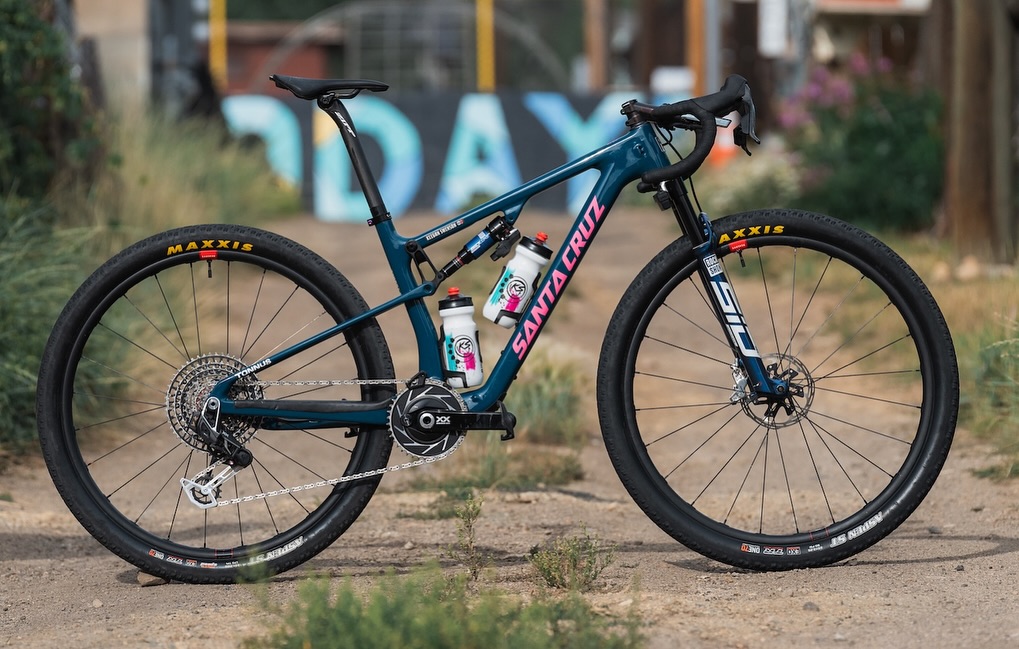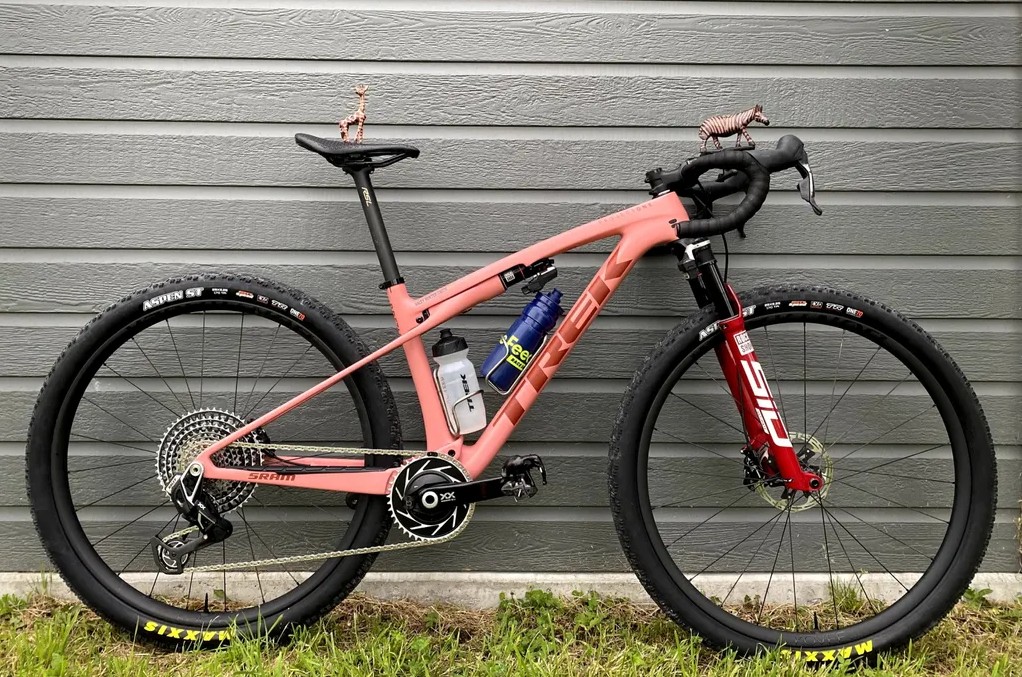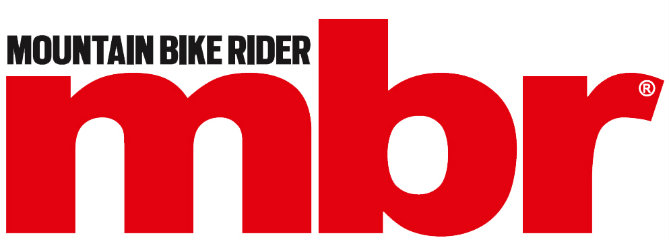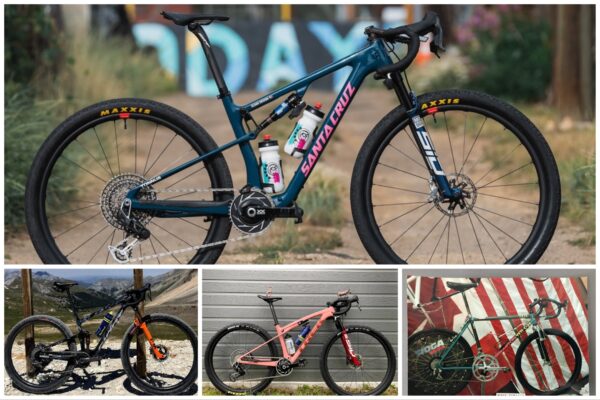The divisive trend was big at the Leadville Trail 100 race recently, but why?
Drop bars do not belong on mountain bikes. I’m not just talking about aesthetics, although they do look pretty weird, I’m talking from a control perspective. Have you ever been riding a trail and thought, ‘You know what would make this more exciting? Having really narrow bars that make the bike twitchier and harder to control!’ Yeah, me neither. And yet, here we are again, with drop bars making headlines at mountain bike races like the Leadville Trail 100 last week – and Ethan Shirey even setting a new course record in the men’s race.
Conversely, the winner of the women’s race Kate Courtney – who also set a course record – chose to use flat bars. And in doing so, proved that you don’t need to pander to trends to be the best. I am in Donald Trump style completely ignoring the success of Shirey there and his drop-bar Frankenbike, of course.

Keegan Swenson’s Santa Cruz Blur with drop bars made another appearance at this year’s Leadville 100
But what is it that makes them so…appealing to some?
We’re not strangers to gravel bikes or long distance epics here at mbr. We recently rode 200miles of gravel roads on a mountain bike, and what we learnt actually surprised us plenty. JD’s also tested a gravel bike against an XC mountain bike to figure out which is best – spoiler alert, the MTB wins.
But this time, when I say drop bar mountain bikes, I’m not talking about your run of the mill gravel bike with fat tyres on. Nor am I talking about ‘super gravel’ bikes that come with a suspension fork and often a soft tail frame. I’m talking a proper hardtail or even full-suspension XC setup with dropped handlebars instead of the traditional flat bars. I promise this story isn’t just me getting on my soap box and telling everyone how ridiculous I think the idea is, or looks. Because even if I think they look daft as heck, from a performance perspective, I just don’t think they suit 99% of riders.
So why do people run them, and why have they become popular? Firstly, narrower bars can help riders get into a more aerodynamic position when riding by reducing their CdA (coefficient of drag). This in turn, can help you go faster without having to put out more power. If you follow road cycling, all this sort of marginal gains stuff is what helps give riders that edge. And aerodynamics isn’t something that’s ignored in mountain biking – why do you think the DH racers wear their speed suits?

Haley Smith’s Leadville 100 bike
But it’s not gone as far as road cycling, because mountain biking is inherently a more technical sport. And while going fast is important, it’s not going to have as much impact as it would in a road race – unless the terrain is mainly flatter, dirt roads.
Keegan Swenson won Leadville 100 last year on a drop bar Santa Cruz cross-country frame with a RockShox SID fork. And in scenarios like the Leadville 100, where riders might spend more time riding solo, and across less technical terrain for most of the ride, it could make sense – purely because aerodynamics is more important. Where you won’t see this sort of adaptation is in XC racing, or even athletes riding races like Leadville that don’t want to compromise their bike’s handling or those that are more likely to end up riding in a pack than going solo for the win.

John Tomac’s drop bar contraption from the earlier days of MTB
And why you probably shouldn’t give this a go…
Mountain bikes are not exactly designed to run drop bars. Besides the logistics of having to adapt MTB groupsets and levers with the intricacies of a drop bar setup, the geometry of MTBs is designed generally for control and handling, not just speed.
Even gravel bikes – particularly those made by MTB brands, are utilising this longer and slacker theory to give their bikes a bit more control. And sure, they have their place. But that place isn’t on technical MTB trails. Don’t get me wrong, I like the idea of people pushing boundaries. I like new tech, and how we develop bikes and mountain biking as a sport is by trying new things. But this, for so many obvious reasons, is not something I would think of when I think of ‘developing’ mountain biking.
In fact, Editor Danny Milner tried the old drop bar trend back in 1990 by attaching a pair to his second-ever MTB, Jonny T style. And in his words, “it was the dumbest thing I ever did, in a long list of every dumb things.” That’s quite the statement, given his history of dumb things – most recently hitting a tree and breaking his collarbone and almost detaching his ear in a crash.

Cole Paton’s Leadville 100 setup
But even though he was doing it for the street cred, he realised they put way too much weight over the front of the bike. Although that didn’t stop him from carrying on running them. Sadly, we have no pictures of this, nor any subsequent injuries from keeping the drop bars on.
The beauty of flat bars is that they offer control. They give you leverage and you can actually guide your bike down trails without putting your life into your hands and wondering whether to sit on the drops or the hoods to get better control. And yes, you can have quite severe flares on gravel bars these days, but again, why not just put flat bars on?!
I asked Alan Muldoon, Chief MBR bike tester what he thought about the drop bar controversy, and he said, “At MBR we fought for wider bars on mountain bikes for years, as it makes the whole off road experience that much better. Drop bars on mountain bikes are simply a backward step.” And I have to agree. Sure, drop bars look different, but sometimes you don’t need to fix something that isn’t broken.
Even Jamie Darlow, Deputy Digital Editor of MBR and the only other one on the team to entertain the idea of drop bar bikes, said, “When I tested a gravel bike against XC, the crappy low position was one of the biggest problems for me. It just seems mad to take a flat bar away from a mountain bike.”
In summary, drop bars are just a bizarre move away from control and handling that makes mountain bikes fun and capable. But, for some, they might have a place. But I can guarantee that place isn’t the North Yorkshire Moors or anywhere within a 200 mile radius of the MBR offices.




